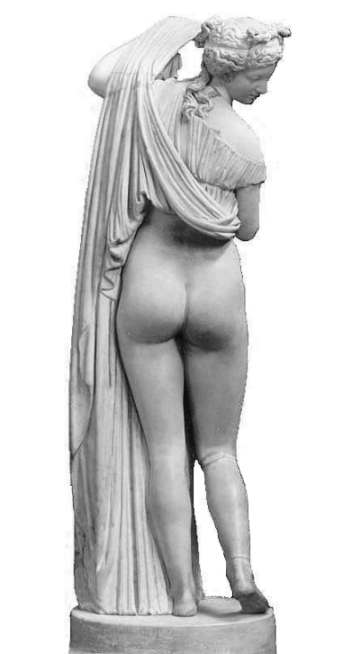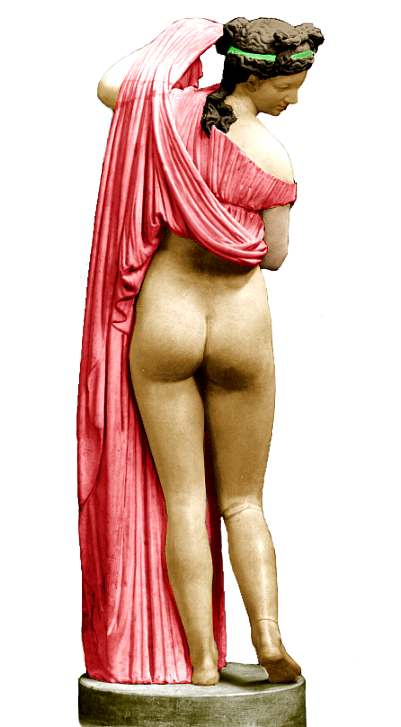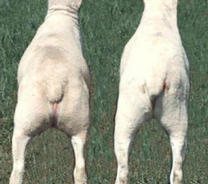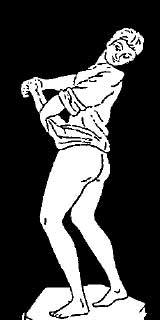.
Hellenistische Kunst : Aphrodite Kallipygos


The narcistic Aphrodite Kallipygos observes her rear side mirrored from the water on the bottom.
Aphrodite Kallipygos. Kallipygos from kallos (beauty) and pyge (buttocks). Roman copy of Hellenistic sculpture, 150-100 BC, at Museo Archeologico Nazionale in Naples, Italy since 1802. Another view
Original set up in Sanctuary of Aphrodite at Syracuse. A "spiral composition" nice to view from all sides. Aphrodite lifts her clothes to show us her beauty. It is a sculpture that could be an example of the Rococo period.
Clement of Alexandria one of the early church fathers attacked the ancient Greek religion. He writes:
Do not the Argives sacrifice to Aphrodite Peribaso (the protectress), and the Athenians to Aphrodite Hetaera (the courtesan), and the Syracusans to Aphrodite Kallipygos, whom Nicander has somewhere called Kalliglutos (with beautiful rump). .... The Sicyonians reverence this deity, whom they have constituted the god of the muliebria -the patron of filthiness- and religiously honour as the author of licentiousness (The Exhortation to the Heathen, 2).


Aphrodite Kallipygos and one of the works assumed to be inspired:
The Bath of Psyche by Frederic, Lord Leighton 1830-1896 . “The woman's pose, with arms raised to reveal her naked body, derives more specifically from the Callipygian Venus, a famous Greek statue that Leighton would have seen in the Capodimonte Museum in Naples. Such a subject would have been potentially shocking to a Victorian audience, but the picture appears to have met with very few moral objections when it was first exhibited at the Royal Academy in 1890. “ (Tate Collection)
Aphrodite Kallipygos and molecular biology
Scientists have discovered a mutated gene named for the Greek goddess, Aphrodite Kallipygos, that causes certain sheep to have unusually big and muscular bottoms. They hope the genetic mutation will illuminate how muscle and fat are deposited in these animals and possibly in humans. These sheep are remarkable because they have very little fat. As one expert explains: "They are converting food into muscle in their hind regions, instead of converting food into fat!”

Left Callipyge Sheep (muscular with very little fat), Right normal sheep.

Sculpture in Madrid, Spain
| Ancient Greece
Science, Technology , Medicine , Warfare, , Biographies , Life , Cities/Places/Maps , Arts , Literature , Philosophy ,Olympics, Mythology , History , Images Medieval Greece / Byzantine Empire Science, Technology, Arts, , Warfare , Literature, Biographies, Icons, History Modern Greece Cities, Islands, Regions, Fauna/Flora ,Biographies , History , Warfare, Science/Technology, Literature, Music , Arts , Film/Actors , Sport , Fashion --- |

